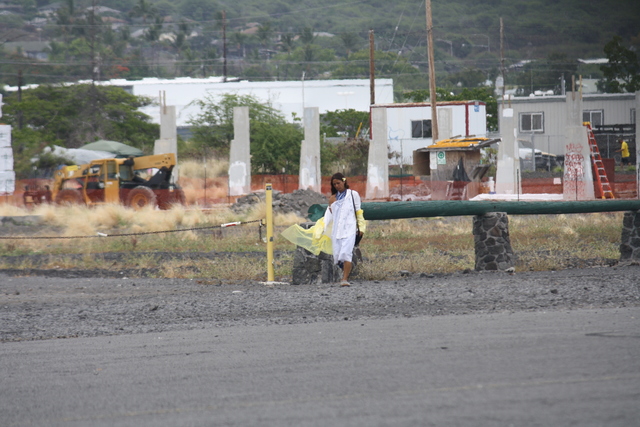KAILUA-KONA — The Hawaii Point In Time Count, an annual survey of the state’s homeless population, was released Wednesday, and the results were a mixed bag of both encouraging and disconcerting numbers.
The homeless tally statewide increased from 7,620 to 7,921, a jump of 301 homeless individuals, or a total increase of 4 percent. That movement is moderate, however, when compared to leaps made in the previous two years. The homeless population rose by 583 individuals (9.2 percent) between 2013 and 2014 and by 702 individuals (10.1 percent) between 2014 and 2015.
Whether the inflated numbers can or should be spun as a positive simply because they’re expanding more gradually than before is open to discussion.
But state Homeless Coordinator Scott Morishige said the relatively modest increase in the homeless population may be due primarily to improved methodology employed by the inherently error-prone survey system, which tries to capture a sometimes reclusive, moving-target population with as much accuracy as possible.
“With the PIT Count, we know historically — on neighbor islands in particular because they are very rural — there has been an under-count,” Morishige said. “This year, it was noted there was increased coordination on Hawaii County and the Island of Kauai, which I think in part contributed to the higher numbers on those islands.”
It was neighbor islands and not Oahu, where the vast number of Hawaii homeless are concentrated, which proved responsible for the majority of the homeless increase in 2016. Hawaii Island saw its homeless population swell by 153 people from 1,241 to 1,394 over the past year, accounting for more than 50 percent of the raw increase statewide.
Kauai also saw a jump of 103 homeless individuals, or a 30 percent localized increase in only one year.
Jen Stasch, director of Partners In Care on Oahu — which provides outreach to the homeless and which teamed up with Bridging the Gap on neighbor islands to conduct the PIT Count Jan. 24 — said while the numbers are disappointing, the organizational push for accuracy among the state’s two Continuum of Care programs should absorb some of the alarm that accompanies such drastic statistical increases.
“The methodology has improved on many levels, and some of those aspects were just the communities coming together and increasing the number of people participating in the count,” Stasch said.
Stasch added that volunteers were also better trained, learning under outreach workers who journey into the homeless community on a daily basis throughout the year.
There were decreases also, specifically a 12 percent dip in homeless veterans on Oahu and a 3 percent drop in those numbers statewide.
Morishige cited the decline as an example of what can be achieved with alignment across government agencies and real coordination and collaboration between service providers and the government — an effort he’s headed up since Gov. David Ige’s emergency proclamation on homelessness in October.
“It’s (reflective of) a real, intense, collaborative effort to reduce chronic homelessness among that population,” Stasch said. An increase in funding certainly didn’t hurt either, and the state will have access to another $12 million to combat the problem of homelessness in the 2017 fiscal year.
The most glaring imperfection on the report was a 12 percent increase in the number of unsheltered homeless — and a particularly high occurrence in that area within homeless family units, meaning more children living outdoors.
“A growing number of (homeless) means growing encampments on public lands, many of which are unsafe environments for people living there,” Morishige.
Another blemish that jumped off the page at Morishige was that of those homeless found to be unsheltered, only 22 percent had been tallied in the previous year’s PIT Count.
“That indicates that many of the individuals falling into homelessness are new to our homeless system,” Morishige explained. “We need to look at how we can address some of the systemic issues to (plug) the pipeline of new people falling into homelessness.”
Morishige said it’s difficult to pinpoint the exact reason for increases or decreases among certain populations, but that he doesn’t believe the shortfall of shelter has anything to do with a strategic shift of focus at state and federal levels to permanent housing solutions as opposed to temporary, emergency housing.
Instead, Morishige believes the slowed pace of homeless growth in Hawaii is directly related to an effort to connect the homeless to permanent housing solutions with more haste.
In the end, the PIT Count is a planning tool that helps the state make data driven decisions by identifying where and how its homeless live. It’s data isn’t infallible, but its getting better with each passing year.
Most importantly, Morishige said the PIT Count helps to develop strategy for a three-pronged attack on homelessness, which focuses on permanent housing, health and human services to tailor the appropriate duration and level of service to different homeless demographics, and looking seriously at how to improve public safety for homeless individuals.






